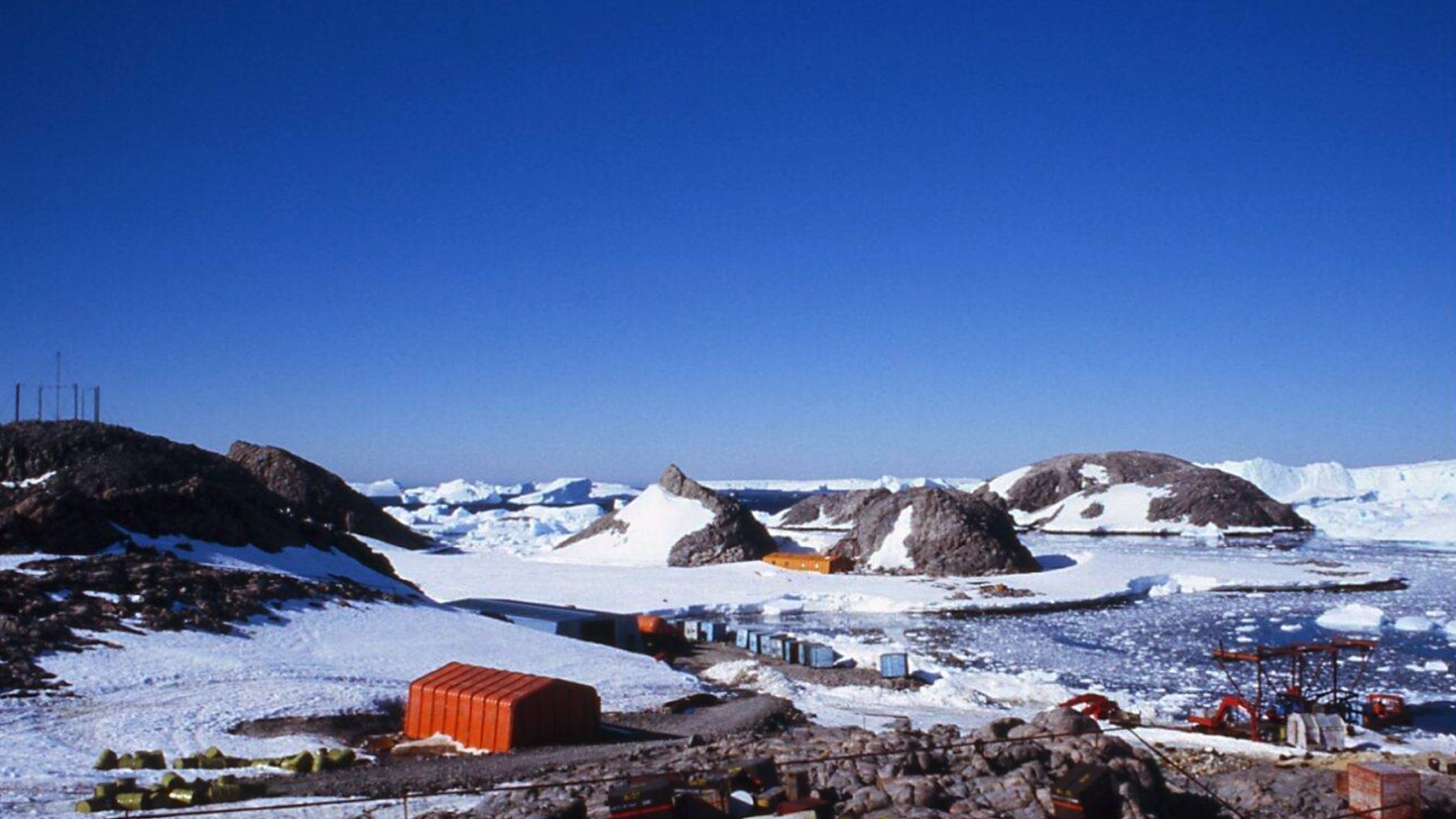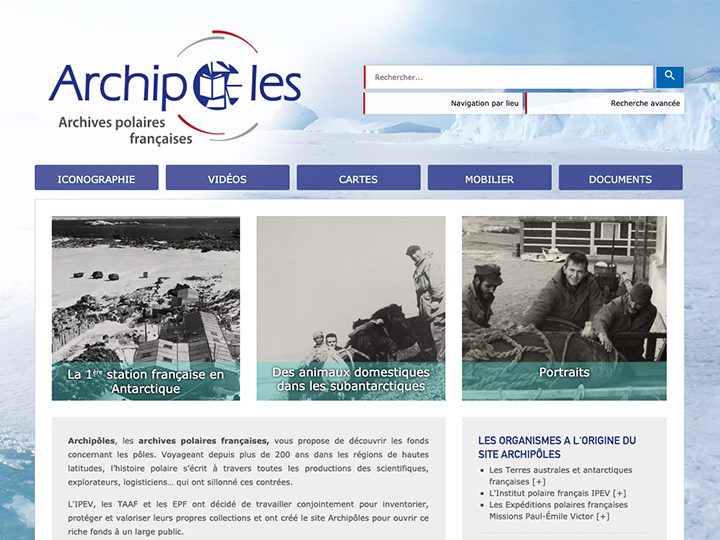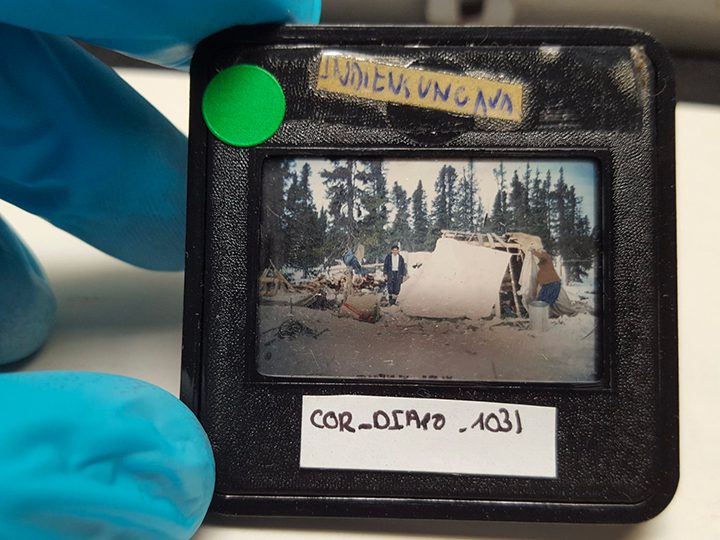200 years of polar history preserved
and shared
Institution
Paul-Émile Victor French Polar
Institute (IPEV)
Expertise implemented
Heritage strategy audit and consulting
Managing heritage assets
Digitisation services
Web promotion
Background
The Paul-Émile Victor French Polar Institute is the public body responsible for conducting French research in the polar regions. It continues the mission begun in 1947 by Paul-Émile Victor, the French Polar explorer.
Using its expertise, along with the scientific platforms it deploys, the French Polar Institute helps highlight the value of the poles and raises public awareness of the issues specific to these regions. In 2017, together with the TAAF and EPF, Aude Sonneville, Head of Communications for the French Polar Institute, launched the Archipoles project to raise the visibility of the unique heritage that is the French polar archives.
Challenges
Spanning over 200 years in high-latitude regions, polar history has been documented in the work of the scientists, explorers, logisticians, and others who have travelled these regions. Recognising that polar research is conducted by various organisations, the Archipoles project partners wanted to preserve the archives of this human and scientific adventure.
To achieve this goal, the archives needed to be analysed, protected from the ravages of time, digitised, and promoted online to make them accessible to all.

The Polar Institute launches the French Polar Research equivalent of Gallica
In 2017, the Institute called on Arkhênum’s expertise to set up this multi-year project, aimed at providing the public with a unique digital platform to through which to explore French polar history. By the end of their first digitisation project, the Arkhênum’s team had established the Archipoles digital library. This was tailor made, with a series of tools developed to facilitate access to the documentary collections.
The platform was warmly received upon release and shared widely in the media (print, online, radio and television). Following the launch, the Polar Institute received many requests to re-use its images in books, films, and for family research. People also came forward with new information, insights, and corrections to the archives, adding to them with fresh testimonials.
Archipoles, a window on life at the poles
Launched in 2018, the digital library created by Arkhênum offers an insight into the lives of seasonal and winter residents, as well as the impact of global warming on the poles.

The Archipoles website benefits from the latest technology (IIIF, SRU), allowing it to complement its collections by virtually grouping together archives from external sources on its website, such as Gallica and even the Cinémathèque de Bretagne.
Using the viewer feature, visitors can study photographs and even topographical maps in minute detail (there are over 1000 maps on the site that are still used to this day).
Archipoles & Arkhênum, a collaborative project
From the outset, Arkhênum has featured the collections it has digitised on the Archipoles website in a series of campaigns, along with collections by Terres australes et antarctiques françaises (TAAF) and Expéditions polaires françaises Missions Paul-Emile Victor.
These campaigns include various types of documents including, photographs, internal publications, maps, plans, and slides.

Auditing, digitisation, integration
In this project, Arkhênum applied its expertise to the entire document value chain.
Certain collections, such as the cartographic archive, require the inventorying and reconditioning of some 5,000 maps before they can be digitised. Once the metadata from the digitisation process has been integrated, the Arkhênum team will incorporate all the collections into Archipoles. This includes the Corbel collection, which is made up of slides.
A future-focused project
The first phase of the Archipoles project focused on preserving the Institute’s historical collections, including its institutional history, research contributions, and private archives. The French Polar Institute is now embracing the importance of preserving collections related to its core activities and logistics, putting them online. This includes documentation related to the construction of the historic Dumont d’Urville station in 1956. A one-month auditing project at the Institute’s premises will allow an archivist to determine the archival value of the various technical documents and their suitability for online publication.
Another project carried out by the TAAF focuses on potentially including 3D modelling of historical sites and furniture in Archipoles to enrich the digital library’s “furniture” section. But the plans don’t stop there, as Aude Sonneville told us.
“Beyond the website content, we’re also looking to further improve the website’s quality in 2022 by refining our keywords to optimise Archipoles’ natural indexing, for example.
It’s also important to remember that the website was launched in 2018, so it’s already 4 years old, and the amount of content has grown considerably since then. We want its user interface to reflect these developments, which is why we’re also looking to update the design.”
Aude Sonneville
Head of IPEV’s Communications Department
Discover other achievements
BnF-Partenariats
BnF-Partenariats teams up with 13 newspaper publishers and Arkhênum to digitise and promote their archives on a shared platform
Institut & France
Institut de France puts its written and documentary heritage on show
German National Library (DNB)
DNB: Search. Find. Discover
French National Industrial Property Institute
Preserving brand history
Renault
BnF-Partenariats
BnF-Partenariats teams up with 13 newspaper publishers and Arkhênum to digitise and promote their archives on a shared platform
Institut & France
Institut de France puts its written and documentary heritage on show
German National Library (DNB)
DNB: Search. Find. Discover
French National Industrial Property Institute
Preserving brand history
